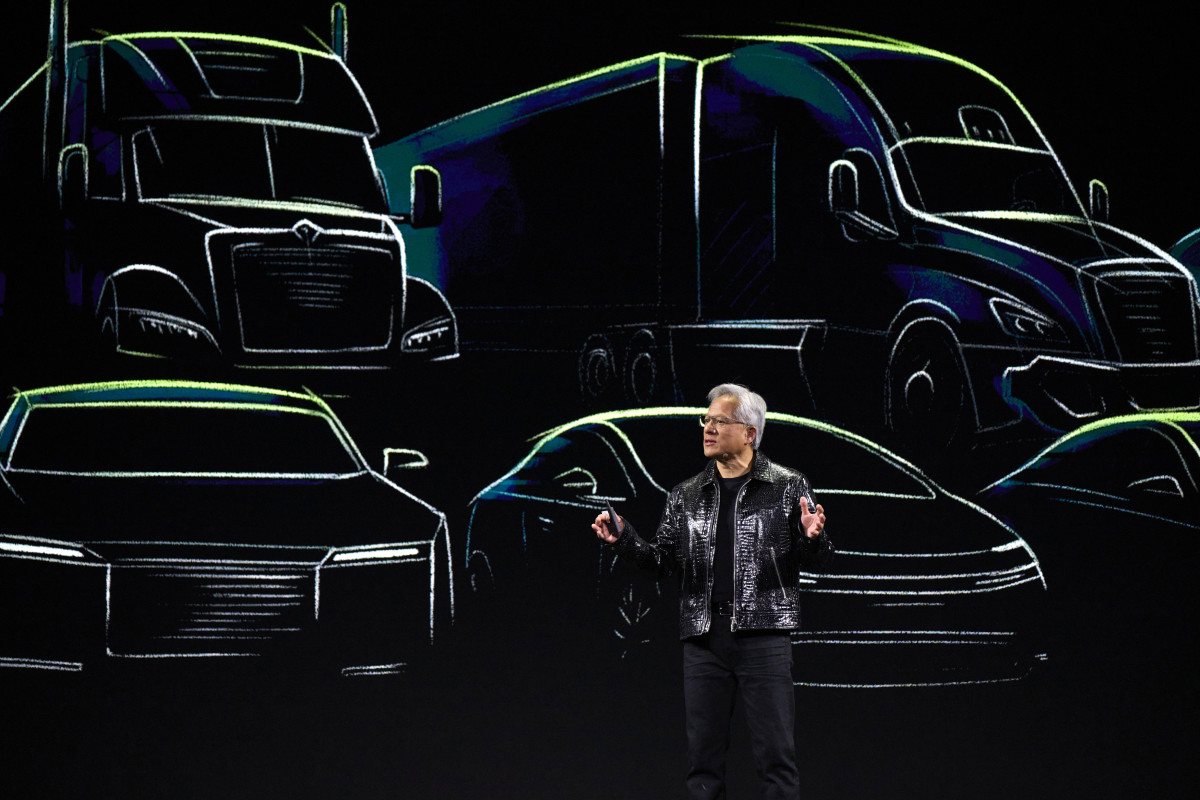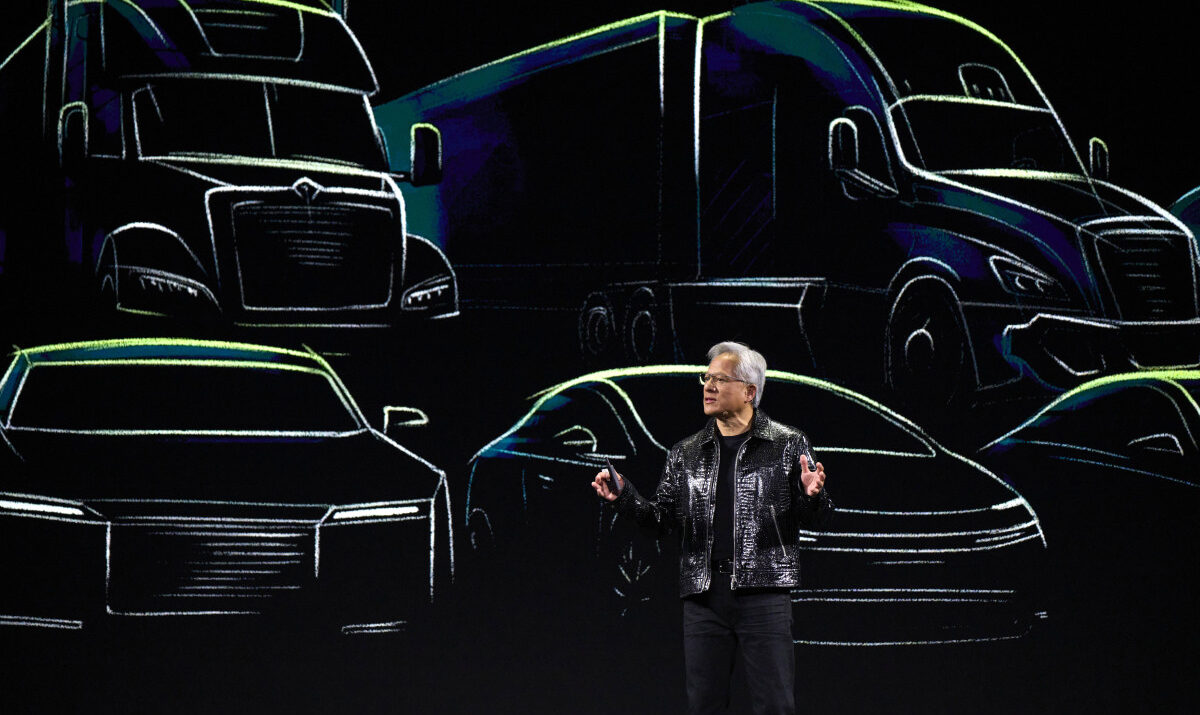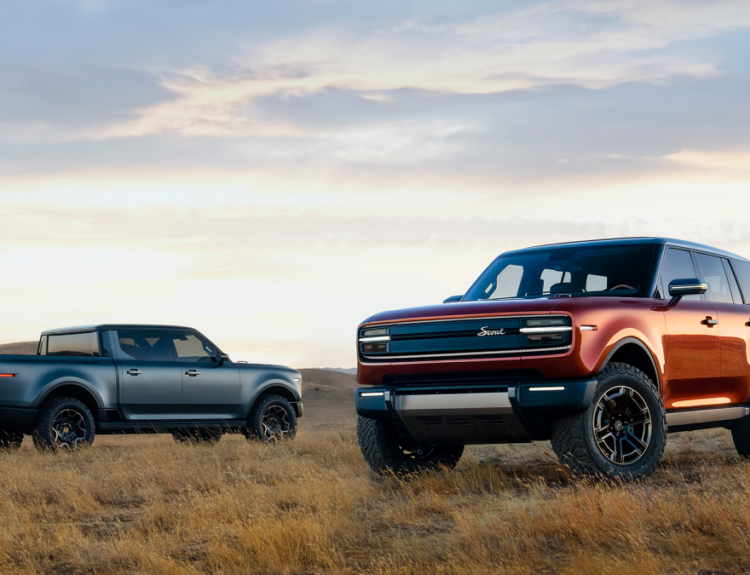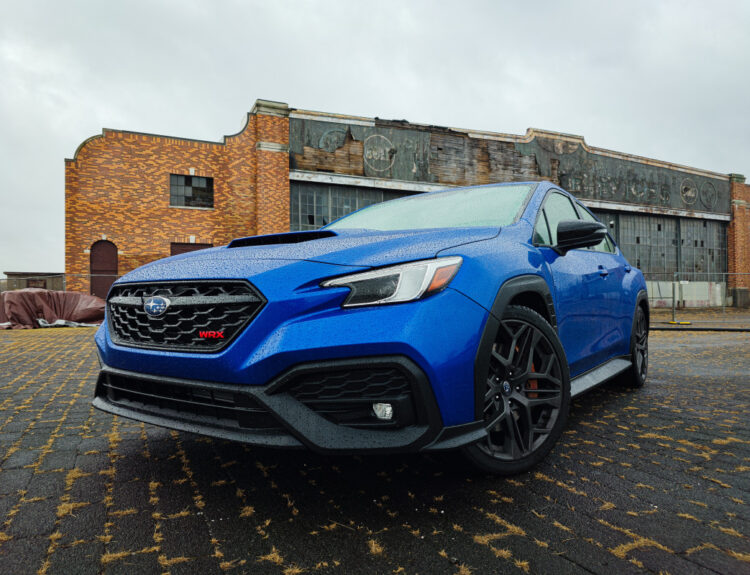
As the race toward autonomous driving intensifies, Nvidia is emerging as a formidable leader in the sector. The California-based semiconductor powerhouse is quickly establishing strategic alliances and introducing cutting-edge technologies that may give it a decisive advantage over its rivals.
While Tesla is often the name most synonymous with self-driving innovation, Nvidia appears set to redefine the landscape. During this week’s Consumer Electronics Show (CES), CEO Jensen Huang revealed a series of lucrative partnerships and technological advancements, including a pioneering method for generating training data. These initiatives could position Nvidia as the quintessential partner for companies venturing into autonomous vehicle development.
A Legacy of Collaboration
Nvidia has long been seen as a reliable ally for automotive manufacturers striving to create autonomous systems. This week at CES, the company reinforced its commitment through new agreements with industry giants such as Toyota, Aurora, and Continental. These collaborations underline Nvidia’s capability to support a wide range of applications, from advanced driver-assistance systems to fully autonomous driving.
A prime example is Toyota’s future plans to utilize Nvidia’s DRIVE AGX Orin platform in its upcoming vehicle models. This technology is expected to significantly enhance features like lane-keeping and adaptive cruise control, setting the stage for more sophisticated autonomous capabilities. Uber has also joined forces with Nvidia to develop self-driving technologies, combining Nvidia’s advanced AI capabilities with Uber’s extensive database of driving patterns—a synergy that could expedite the deployment of autonomous ride-hailing solutions.
Transforming Training with Generative Data
A standout advancement from Nvidia this year is its generative physical AI platform, known as Cosmos. In contrast to Tesla, which relies heavily on its existing fleet of vehicles for data acquisition, Nvidia’s Cosmos can generate realistic, physics-based data within a virtual environment. This innovation is a potential game-changer for automakers with limited real-world data resources.
Cosmos operates by using a small dataset gathered from real-world conditions to produce vast quantities of synthetic driving scenarios. This simulated data is invaluable for training AI systems in crucial tasks like obstacle detection and traffic merging. For firms newly entering the autonomous driving landscape, this capability offers a significant competitive advantage, allowing them to develop effective systems without the prolonged wait for extensive data collection.
Divergent Paths to Autonomy
While Tesla has built its self-driving technology around data procured from its fleet of millions of consumer vehicles, this model has its constraints. Tesla’s reliance on cameras, coupled with its avoidance of lidar and radar, has sparked debate about its adaptability in challenging visibility conditions.
Nvidia, on the other hand, embraces a multi-sensor framework. By integrating data from cameras, lidar, and radar, Nvidia’s systems potentially offer a more robust understanding of the driving environment. This comprehensive approach may equip Nvidia-powered vehicles with superior capabilities to navigate complex scenarios, such as heavy rain or dense fog. Furthermore, unlike Tesla’s fleet-specific strategy, Nvidia’s open platforms can be leveraged by a diverse array of automakers, which explains the growing number of partnerships emerging around its technology.
A Holistic Ecosystem for Development
The appeal of Nvidia’s offerings lies in its expansive ecosystem. Beyond supplying chips for onboard computers, Nvidia delivers tools that span the entire spectrum of autonomous vehicle development. Automakers can simulate millions of miles of driving via Nvidia’s Omniverse platform and utilize the company’s DRIVE AGX Orin units for real-time data processing.
This comprehensive support simplifies the technological journey for manufacturers, who otherwise may struggle to piece together components from various vendors. With the added advantage of Nvidia’s cloud-based training systems, automakers can refine their AI models remotely, ensuring their vehicles remain at the forefront of innovation as technology evolves.
Navigating Challenges Ahead
Despite its strides, Nvidia faces hurdles in validating the real-world effectiveness of its generative data. While synthetic data holds remarkable potential, it must establish reliability against the backdrop of Tesla’s robust dataset, which comes from actual driving conditions. Nvidia will need to demonstrate that its simulated models can achieve safety and efficacy on par with real-world data.
Moreover, the autonomous driving market is intensely competitive, and while Nvidia is gaining traction, it must contend with Tesla and other well-funded newcomers eager to carve out their share of the industry.
Looking to the Future
With a burgeoning roster of partners—including Mercedes-Benz, Volvo, and BYD—Nvidia stands poised to take a leading position in the autonomous driving arena. The fact that even independent Chinese manufacturers like BYD are incorporating Nvidia’s technology underscores its influential reach. Analysts project that Nvidia’s automotive division could generate as much as $5 billion in revenue by 2026, fueled by the increasing adoption of its platforms.
A Defining Moment
As the struggle for dominance in autonomous driving unfolds, the contest appears to be converging on a duel between Tesla and Nvidia. Tesla’s advantage in data collection and strong brand positioning makes it a formidable opponent. However, Nvidia’s scalable and sensor-agnostic frameworks may appeal to automakers aiming to streamline their path toward deploying autonomous vehicles swiftly and effectively.
Whether Nvidia can sustain its momentum remains to be seen, but with its innovative technologies and expanding influence, the company is certainly shaping the future trajectory of self-driving cars.
Source:www.autoblog.com






